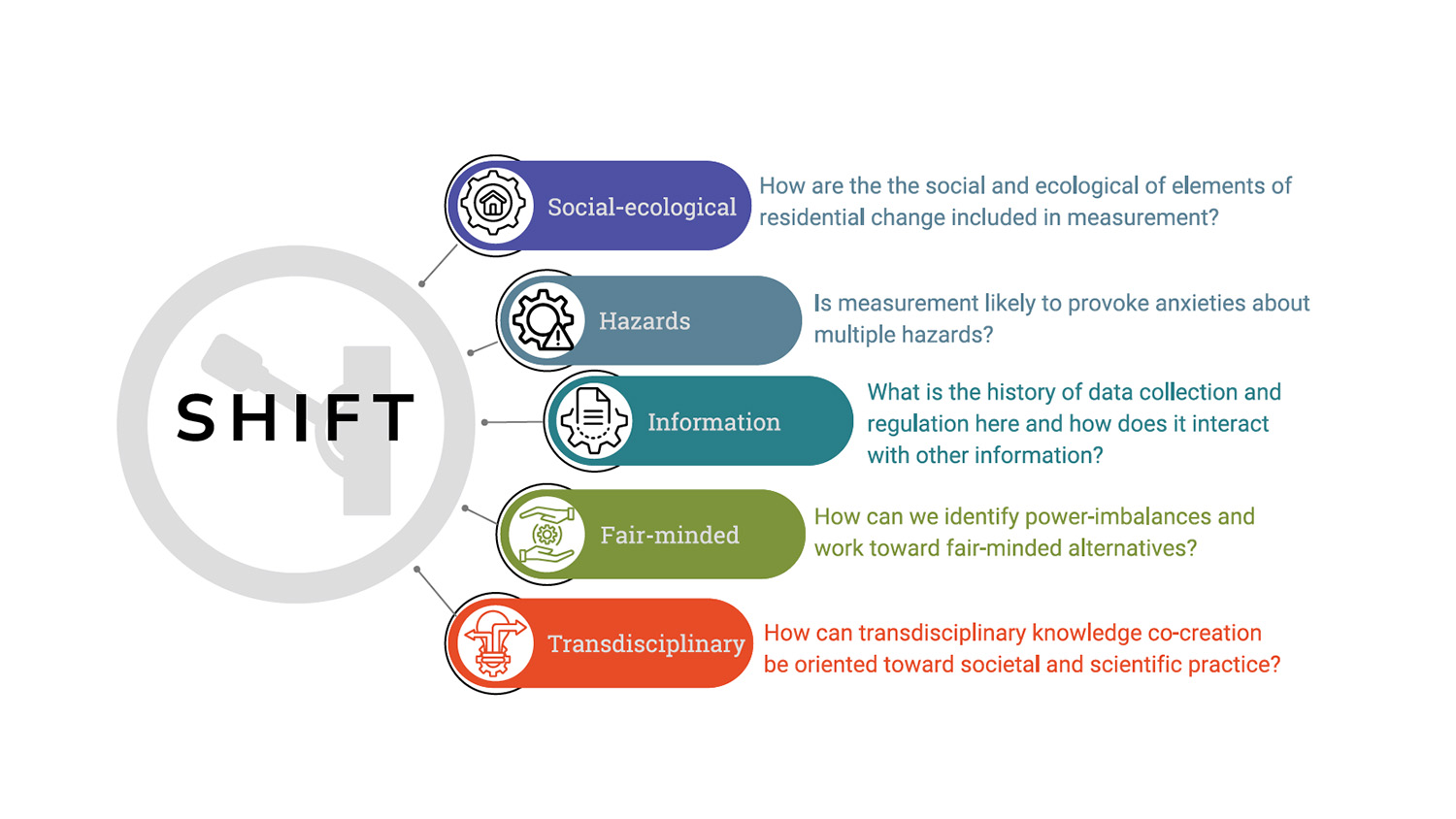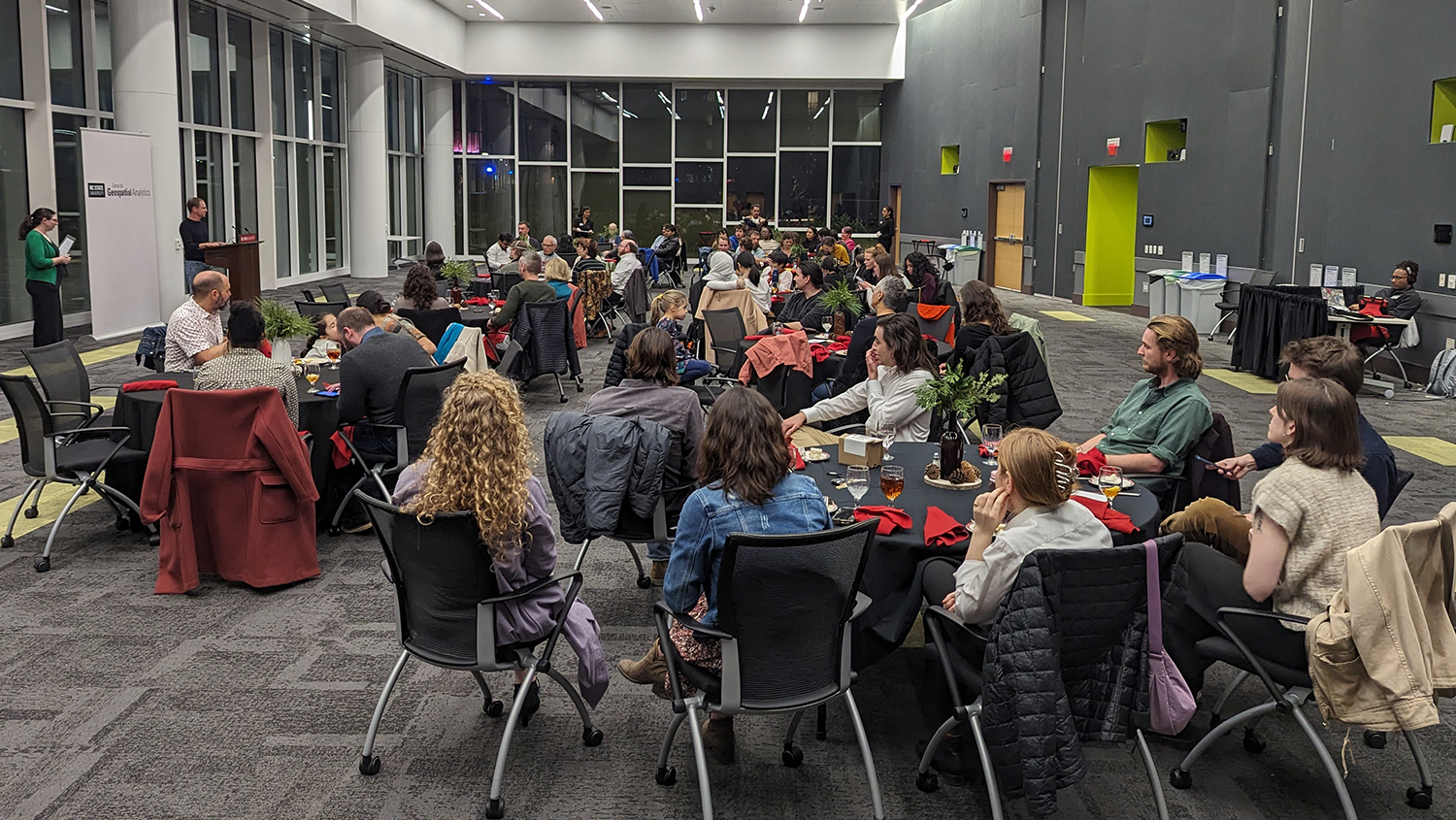First, Do No Harm: Guidance for Community-Engaged Research After Disasters

After disasters, the people impacted are often called upon to participate in scientific research, but researchers can easily forget that participants are more than study subjects: They are survivors. Disasters are traumatic, and those who have endured them have their own concerns, needs and perspectives that must be met with respect and consideration.
So, how can scientific studies avoid exacerbating trauma? How, like medical interventions, can they be designed and conducted to “first, do no harm”?
Enter the SHIFT framework co-developed by Bethany Cutts, an associate professor in the Department of Parks, Recreation and Tourism Management at North Carolina State University and a faculty fellow at NC State’s Center for Geospatial Analytics. SHIFT encourages researchers to ethically center the experiences of disaster survivors while collecting scientifically rigorous data, to improve how the scientific process acknowledges and addresses a community’s needs. The framework comprises five elements:
- incorporating social-ecological context into measurement,
- preventing stigma or fear about hazards during data collection,
- understanding the history of information locally collected or enforced in the past,
- encouraging fair-minded practices that identify and avoid power imbalances, and
- co-creating transdisciplinary knowledge that serves societal and scientific needs.
The importance of reflection and representation
Cutts and her collaborators piloted the SHIFT framework while working with North Carolina residents whose properties were flooded during Hurricanes Matthew and Florence in 2016 and 2018. As she and her team were conducting disaster recovery interviews, Cutts learned that community leaders were worried floodwaters may have polluted local soils. So she engaged interested residents in soil sample collection to test for fecal coliform bacteria and heavy metals. “It didn’t seem ethically responsible to continue doing interviews [alone] when the community had concerns about the possibility of toxins being distributed by flooding,” Cutts says.
Through a combination of interviews and soil sampling, the project yielded a rigorous snapshot of post-flood soil conditions as well as insight into how residents of many different, including intersectional, identities viewed flooding and its impacts as well as flood recovery.
The project was successful, Cutts notes, because SHIFT helped her team to be intentional about each component. They considered the power of data, how data could be used or misused, and how researchers’ own identities and perspectives mattered for building relationships and trust. Soil samples were collected from NC State’s campus to provide reference data and avoid stigma, and information gained from the analyses was shared back to participants in ways valuable to them.
Of particular importance was ensuring that residents’ demographics were represented by the people who interviewed them and guided them through sample collection. Cutts hired a group of “community specialists” who “helped us as a team to know the local landscape,” she explains. These specialists were recruited specifically for their “untraditional but relevant qualifications,” such as experience in trauma counseling, social work, political leadership or housing issues. They understood local conditions and concerns, had existing networks in the area and were well-received when knocking on doors or making phone calls. “Having local accents, local expertise––it was huge,” Cutts says.
Guidance for other researchers
The SHIFT framework can be applied “to any infrastructure improvement project,” Cutts explains, helping to ethically center the experience of community members whom researchers, engineers or planners hope to engage.
“It’s one thing to do things to people and another to do things for or with people,” Cutts says. “The community has contextual knowledge you need, to do work in service of the public good and have that work be maintained.”
Cutts’ advice for other scientists hoping to implement SHIFT comprises five main themes:
Partner with social scientists.
“Biophysical scientists and engineers need to partner with social scientists” when doing community-engaged research, Cutts says. “Otherwise, they will do bad science without realizing it.” Conducting and analyzing interviews and other input from people requires training and expertise just as rigorous as other areas of science.
“By treating interactions as social science data,” Cutts says, “we can evaluate the range of ways that people are relating to nature and discover how to share the results and recommendations back in ways that are relevant.”
Be reflexive.
It’s human nature to filter the world through our own views and experiences, and researchers need to realize when they’re doing that, Cutts says, to avoid making assumptions or judgements. “Understand the social perspectives that researchers themselves bring to a project and how those perspectives might or might not align with the community’s,” she advises. “Communities have a different idea of how humans and the environment relate, just as scientists from different disciplines have different ideas.”
Additionally, scientists must “pay attention to the incentive structure of academia and the value of work to communities,” Cutts notes, “because they are not well aligned at all.” The findings from her project, for example, were published in a scientific journal four years after samples were collected, because she prioritized getting results back to the community before publishing.
Be responsive.
“Research teams active in disaster recovery are often led by biophysical expertise and must focus on ethics more specifically,” Cutts says. “The first step is treating disaster survivors as collaborators instead of people the researcher is providing a service to, or people who are providing a service [like collecting publishable data] to the researcher.”
What a community needs might not be cutting-edge science, but researchers have an ethical obligation to treat their community partners fairly and ensure mutual benefit. “Be flexible about how you can match what you can do to what the community needs,” Cutts says. For example, her research team didn’t have expertise in the heavy metal analysis her community partners requested, but she was able to secure funding to pay another lab to run the soil samples.
“Listen for and identify ways to fill data gaps and address community needs,” Cutts advises. “A data gap itself is the beginning of a question, not the end of one. It’s not, ‘we can’t do that because there is no data.’ The absence of the data itself might be the problem.”
Critically consider how to engage and share back.
Ethically engaging communities includes being mindful about how to collect information and how to return results.
“Ask people to participate in a way that’s useful and relevant to them,” Cutts says. In her study, residents collected soil samples themselves, as community specialists walked them through the protocol, and personal results were returned and explained in person. Community specialists showed residents how the samples from their own yards compared to community values and samples taken on the NC State campus, and anonymized results were shared back at higher community levels.
Often, residents asked about other local projects or disaster recovery programs, so Cutts ensured they were provided with contact information and additional resources for getting answers to their questions.
“Scientists get nervous about sharing info” that doesn’t directly relate to their own project, Cutts says, but providing this information––and in the right way––helps address important needs. “Access to information about your environment is very sparse in low-income, rural communities, and it’s often left to the individual to find information,” Cutts says. When sharing back answers to specific questions asked by only one or two people, “it’s less stigmatizing or obvious to give the same information to everyone on the same sheet,” she suggests.
Don’t be afraid to be human.
“In disaster research, the idea of political neutrality is oppressive,” Cutts says. Researchers’ attempts to be objective can leave them insensitive to disaster survivors’ trauma, exacerbating harm.
“Scientists want to have boundaries,” Cutts says, “but they can permeate the boundary of outside objectivity with compassion, and it’ll be okay.”
Consider whether barriers or decisions are “an actual restriction or just a conventional one,” Cutts says. Self-reflection and compassion can improve both the process and outcomes of community-engaged research.
- Categories:


